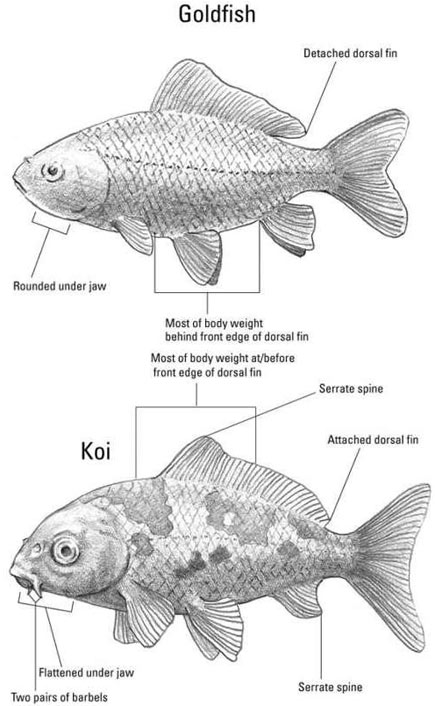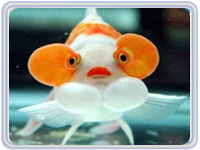IKAN MAS KOKI VS KOI
Ikan mas koki / Fish, including species such as ikan mas koki / goldfish and koi, are one of the most common type of pets in the world. ikan mas koki / Goldfish and koi are members of the carp family, but they are different from each other in that ikan mas koki / goldfish do not have any barbels, which are tactile organs containing the taste buds, around the mouth. This particular characteristic allows them to be easily distinguished from koi.
Ikan mas koki / Goldfish actually exist in a far wider range of colors than their name implies. They are suitable for both ponds and home aquariums, although the different color varieties can vary in terms of their hardiness, and not all are suited to being kept outdoors all year in areas where temperatures can fluctuate widely.
HISTORY
It was common for people to keep private carp ponds in China during the Tang dynasty. Other sites for these ponds were in the grounds of monasteries and temples , where monks would watch over them as guardians. It was during this period that various genetic mutations caused some of these carps to exhibit a golden coloration instead of their natural dull colors. These golden carps were selected and bred over many generations.
The fish continued to be popular during the reign of the Song Dynasty. The emperor Chao Kou, who was something of a goldfish enthusiast, even ordered the collection of these golden fish to help restock his ponds. Imperial favour could well have been a very potent influence in fostering the popularity of the goldfish.
GOLDFISH TYPES
There are mainly two types of goldfish. They are the egg-shaped body goldfish and the flat body type. The flat body types generally are the hardiest, most competitive , and easiest to care for - thus they are most suited for beginners. Flat body type goldfish include the common, comet, wakin, jikin, and shubunkin goldfish. Some of the more popular round or egg-shaped goldfish include the ikan mas koki / fantail, ikan mas koki / ryukin, ikan mas koki / veiltail, ikan mas koki / oranda, ikan mas koki / pearlscale, ikan mas koki / telescope-eyed, ikan mas koki / black moor, ikan mas koki / ranchu, ikan mas koki / bubble-eye , and many others. It is important to note that most egg-shaped goldfish, with the exception of the fantail, ryukin, and black moor, are not suited to be kept in an outdoor environment such as a pond.
KOI AND GOLDFISH IN PONDS
 |
| GOLDFISH AND KOI COMPARISON |
Koi and some variety of goldfish are popular pond fish, since they are very hardy. They can survive in a pond in extreme temperatures, as long as there is adequate oxygen and the pond does not completely freeze over.
Common (sometimes called feeders) goldfish , London and Bristol shubunkins, jikin, wakin, comet, and fantail can be kept in a pond all year round in temperate and subtropical climates. Moor, veiltail, oranda and lionhead are more fragile and can only be kept in ponds during the summer in cooler regions.
During winter months, goldfish will become sluggish , stop eating, and often stay on the bottom of the pond. This is completely normal behavior; once the temperature is warmer they will become active again.
IN AQUARIUMS
Although goldfish bowls are very popular, they are not an ideal environment to keep goldfish. Goldfish are very easy to care for but they still require cleaned and well-aerated water, which is hard to maintain in a goldfish bowl. Housing a goldfish in a bowl can increase the risk of nitrate/ammonia poisoning and stunting the goldfish.
Goldfish will consume almost anything. The kind of food goldfish will eat includes flakes, cooked peas, and insect larvae. Flake food often is preferred over pellet food due to the fact that they are easier for the goldfish to see and to clean after.
In general the lifespan of goldfish and koi is over 10 years.
BEHAVIOR AND HABITS
Goldfish can also show a range of social behaviors. When new fish are introduced to an aquarium, aggressive "bully-like" social behaviors may sometimes become evident, such as chasing the new fish, or fin nipping. These behaviors, though, usually cease within a couple of days.





good.. :)
BalasHapuswooow..
BalasHapus